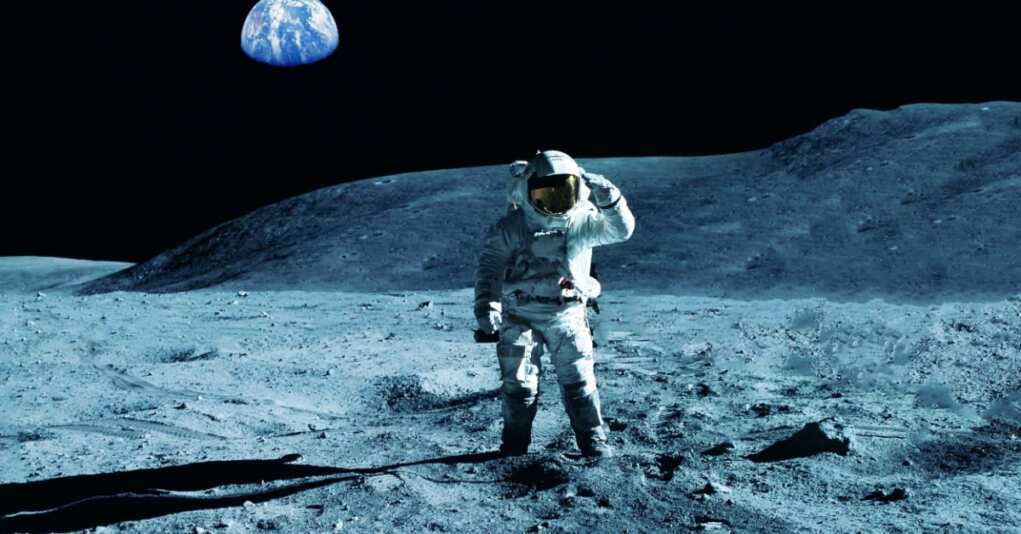The Moon Landing: Humanity’s Greatest Leap—or Hollywood’s Greatest Hoax?

On July 20, 1969, millions of Americans huddled around their televisions to witness history: astronaut Neil Armstrong stepping onto the lunar surface and uttering the iconic words, “That’s one small step for man, one giant leap for mankind.” The Apollo 11 mission represented the pinnacle of human ingenuity and the culmination of a fierce Space Race with the Soviet Union. For many, it was a defining moment that showcased the boundless potential of the United States.
But not everyone was convinced. For decades, a vocal minority has claimed the moon landing was an elaborate hoax staged by NASA and the U.S. government. Despite overwhelming evidence to the contrary, these conspiracy theories persist, fueling debates and inspiring countless documentaries, books, and late-night discussions.
First, let’s explore the monumental achievement itself. The moon landing wasn’t just about planting a flag; it was about proving that the United States could conquer the final frontier. During the height of the Cold War, the Space Race was more than scientific exploration—it was a demonstration of technological and ideological superiority. Landing on the moon wasn’t just a victory for NASA; it was a victory for democracy, capitalism, and the American spirit.
The Apollo program required a level of innovation and teamwork rarely seen in human history. Over 400,000 engineers, scientists, and technicians worked tirelessly to solve seemingly insurmountable problems. From designing the Saturn V rocket to developing the lunar module, every step of the mission pushed the boundaries of what was possible. When Armstrong and Buzz Aldrin touched down on the Sea of Tranquility, they didn’t just achieve a national goal—they proved that humanity could accomplish the impossible.
So, why do some people believe it was all a sham? The moon landing conspiracy theories gained traction in the 1970s, fueled by distrust in government following events like Watergate and the Vietnam War. Skeptics pointed to anomalies in the footage, such as the way the American flag appeared to wave (despite the absence of wind) or the lack of stars in the lunar sky. They claimed the entire event was filmed on a soundstage, directed by none other than Hollywood legend Stanley Kubrick.
Of course, these theories fall apart under scrutiny. The flag appeared to wave because it was equipped with a horizontal rod to keep it extended, and the movement resulted from the astronauts’ handling of the pole. The lack of stars? A result of the camera’s exposure settings, which were calibrated for the brightly lit lunar surface. As for Kubrick’s alleged involvement, let’s just say it makes for an entertaining story, but no credible evidence supports it.
NASA and countless experts have debunked these claims time and again. The moon rocks brought back from Apollo missions have been studied extensively, and their unique composition provides undeniable proof that they came from the lunar surface. Additionally, retroreflectors placed on the moon during the mission are still used today to measure the distance between Earth and the moon with laser technology.
So, why does this conspiracy persist? Part of it lies in human psychology. People love a good mystery, and conspiracy theories often provide simple explanations for complex events. The idea that the moon landing was faked offers an appealing alternative to the staggering achievement it represents, especially for those who find it hard to believe humanity could pull off such a feat.
The moon landing was more than a triumph of science and engineering—it was a moment that united people across the globe. It reminded us of what we can achieve when we work together and aim for the stars, quite literally. While skeptics may continue to question its authenticity, the evidence is clear: humanity reached the moon, and the legacy of that moment continues to inspire generations.
The next time someone tries to convince you it was all a hoax, just ask them one question: if we can fake the moon landing, why can’t Hollywood make CGI that looks this good even today?






